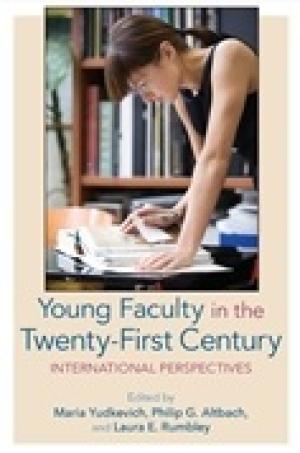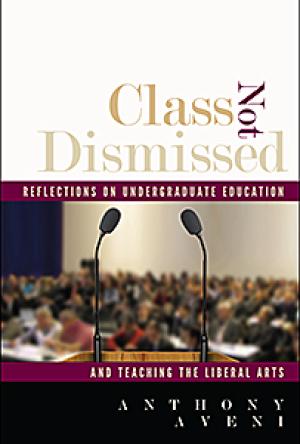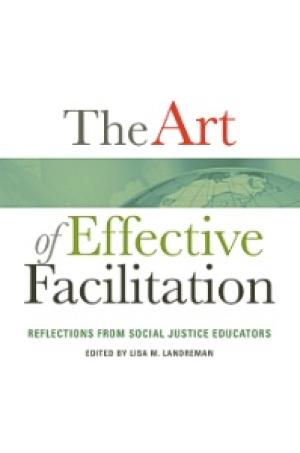Resources by Andy Draycott

This is a book about teachers and not about teaching. Furthermore, it is a book about data on mass populations of teachers in higher education from ten different countries ungarnished by local anecdote or illustrative portraits of a faculty person in real working conditions. The reason this book is worth paying attention to in this forum is that it shines a comparative light on the perils and possibilities that face new entrants into the academic field – some of whom will be your colleagues. Or rather, because this book is of more interest as a reference for hiring committees and deans, it tells you of the challenges your candidate has faced to reach your attention in the first place. That is if you are open to exploring how to move from even national inbreeding to internationalization of faculty recruitment. We find here the results of a ten country participative research program into the realities of career preparation, openings and market transparency, prospects and permanence, of the academic life, individually presented and analyzed and then cumulatively assessed by the editors in the final chapter. The countries are Brazil, China, France, Germany, India, Norway, Portugal, Russia, South Africa, and the U.S. There is of course a vast difference in contexts – from massive increase of student demand and a dearth of faculty, to a tedious and precarious shuffle of young faculty into middle age before a realistic prospect of career stability and something coming close to middle class lifestyle. (This latter is an unquestioned normative standard even as it is evident that the status of the academic profession in many societies is falling.) A number of thematic emphases emerge throughout the chapters, specifically the impact of hiring practices and terms of employment on female faculty, the difficulty of inbreeding and the social burden of academic networking, as well as more common experiences of young faculty such as heavy teaching load and administrative obligations with less time for research. It is agreed that contract and temporary employment with attendant uncertainty is the newest but also most detrimental aspect of current higher education. Some gems, of course, emerge from the textual detail. Male professors can get paid more in India after undergoing a vasectomy, a PhD will get male students out of military service cheaply enough in Russia, females are in the majority of doctoral students in Portugal. As a foreign born and trained academic teaching abroad, and given the international prospectus of the book, I shall concentrate a few remarks on the international (and not just national) data. Norway is concerned that too much of its government investment in doctoral work funds foreign born scholars, Portugal experiences a brain gain and often requires doctoral students to have international experience, France is relatively closed as a system, whereas South Africa welcomes PhDs from abroad in large number. Interestingly the chapter devoted to the US paid no attention to its cohort of international faculty. Perhaps this is so because international faculty are imagined to be ubiquitous, but alongside collegial anxiety about brain drain from abroad this disregard of the good or otherwise of international recruitment was noteworthy. India and Brazil have fewer foreign imports but radical differences in conditions for young faculty in public (better) or private (worse) sectors. India has a massive teacher shortage whereas the EU experiences long waits for civil servant professors to retire, and in the US there is not even a retirement age. If teaching religion is to benefit from an international perspective, as I believe it does, it is going to mean pursuing scholars from very different educational settings and looking (for US job searches) beyond easily accessible US-based guild networks. (I leave to others the judgment, case by case, as to whether US-trained international scholars are as international as those trained abroad.) It will mean understanding different pressures faced by potential job candidates from other countries. This book is a great resource for this purpose. Its data may also facilitate the comprehension of institutional pressures that affect the success or otherwise of international scholarly networks and projects as faculty from one country interact with faculty from another. I think of my current project with colleagues from Brazil where the broad data of Elizabeth Balbachevsky's chapter contextualizes what I have picked up in conversation.

Entering his career as a high-flying yet narrowly trained graduate researcher in astronomy, Aveni’s engagement with students in his discipline and in the interdisciplinary context of liberal arts education has seen his own research flourish -- as indicated by his full title as Russell Colgate Distinguished Professor of Astronomy, Anthropology, and Native American Studies at Colgate University. That this flourishing has been driven by continually seeking ways to entice his students to enjoy and collaborate in learning and research, rather than by dint of solely private endeavor against the grain of his teaching commitments, is marvelously set out in his tales of fieldtrips, flunked comet observations, and explosive co-teaching assignments. Teachers of religion and theology may find themselves under increasing pressure to justify their place in the liberal arts context. Aveni shows clearly how imagination and good teaching practices can both competitively enhance a discipline’s standing and co-operatively benefit collegial efforts in other areas. My particular interest in the book arises from the challenge of leading general education redesign efforts at an institution where religion and theology are deeply cherished. I have needed to imagine how other disciplines can enrich my teaching of theology as integral to a liberal arts education. Aveni, with a lifetime of experience, has been helpful both practically and philosophically as I approach my local task. For example, where we emphasize interdisciplinary integration with some co-teaching and team teaching, Aveni looks at those arrangements as more beneficial when disintegrative – that is, when conflict between teachers generates a learning opportunity for students. Those not yet inducted to the professional discourse on general education and the liberal arts will find this text a winsome entry, shorn as it is of the social science research-speak that can clog the fluency of that vital conversation. Aveni is a dedicated practitioner, demonstrating in his own prose the liberal arts skills that should be demanded even of those in STEM. Aveni questions the commodification of education in his last full chapter: “Education just isn’t a commodity, and I don’t think students in the midst of a classroom experience can fully judge its value” (175). He is, at the same time, also able to take the long view on teaching evaluations to recognize their relative worth. He is not a traditionalist in the sense of insisting on a classical western canon, claiming that its proponents, such as Allan Bloom, are “many whose backgrounds demonstrate a profound lack of inquiry into cultural ideals other than their own” (183). Readers will be rewarded with this kind of punchy delivery that invites learning by agreement or disagreement, but not through over-complication and obfuscation. Aveni writes as a generous peer. He is quick to recognize the importance of senior mentors, alongside mundane realities of budgetary constraints, innovative grant-seeking, and teaching driven by research. Throughout, the author’s wit and humor stand out, but readers will be struck most of all by his care for his students.

There is a whole industry of administrative agents and auxiliary student service providers inhabiting the world of higher education bordering the classroom. Whether it is in the areas of residence life, student affairs, or service learning, practitioners provide social justice education (SJE). Inside the classroom, universities and colleges engage faculty to provide discrete courses, or enable interdisciplinary multicultural experiential learning for their students under the rubric of social justice education. Indeed, as this collection testifies, even student peer instruction can be key to unlocking conversations and attaining social justice learning outcomes. The book’s multiple authors were brought together under the aegis of the ACPA-College Student Educators International Commission for Social Justice Educators. Faculty, administrators, development support staff, and students themselves contribute a variety of chapters focusing on the task of facilitation. As the title suggests, each gives a thick description of their context to flesh out the claim that facilitation is an art rather than an exact science. This is not a simple how-to manual. The book is organized into four sections: Frameworks from Theory to Practice; Understanding Identities and Facilitation; Facilitation Design and Techniques; and Supporting Student Social Action. One might ask, “Why should teachers of Theology and Religion care?” One attractive answer is that SJE aims at transformation and action in relation to social structures of dominance and oppression. There are underdeveloped suggestions in the text that dominant religious assumptions need examining on campus and in wider society. Certainly the investment of religious studies and theology disciplines in the questions of race and whiteness, gender, sexuality, and broadly, identity -- however controverted -- means that awareness of the theoretical and practical bases of campus work for students is important. To my mind, the most interesting chapters are those framed largely as dialogues between two authors. Where facilitating conversation, awareness, disclosure, negotiating triggers, and gaining empowerment is the topic, this mode of writing is immediately attractive for demonstrating what is being written discussed in a way that cannot otherwise be done. The authors are wonderfully humane in addressing their own growth in awareness of the importance of social justice education, and their faltering steps to facilitate that growth along with their students or peers. Social justice education is about relationships and fostering learning that is transformative. Not all will agree with the account of justice that is drawn on in the book: Justice as inclusive individual identity rights procedurally secured over against hegemony is the framework. Certainly different ways of living religious traditions, with their thick accounts of the good framing what counts as just, will dispute some assumptions here. Nevertheless, or rather, precisely so, they are invited into the conversation that is facilitated. Teachers of theology and religion might take much of the wisdom accrued here into their class discussions, seminars, and workshops. Further, everyday teaching will be more attuned to the strivings toward justice in the wider higher education community. I would have liked more discussion about ableism and people with disabilities. At times the thick description felt thin, given the constraints of what is communicable on a page: the experiential stories almost needed longer narration to draw in a reader who does not always inhabit the SJE discourse. What is in one sense a distraction for one jumping into the field -- numerous references to authoritative tomes unknown -- is at the same time a boon to the reader wanting to explore further: the chapter bibliographies are extensive and rich.